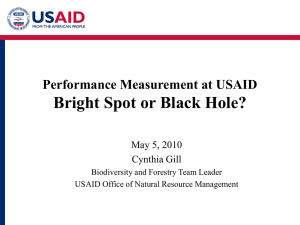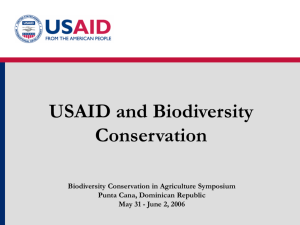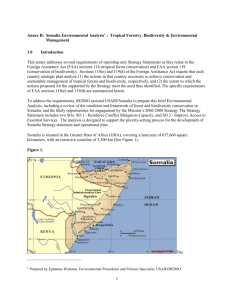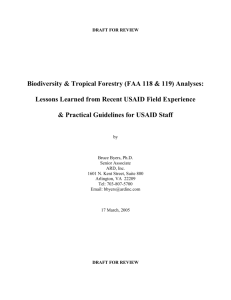USAID and Biodiversity
advertisement
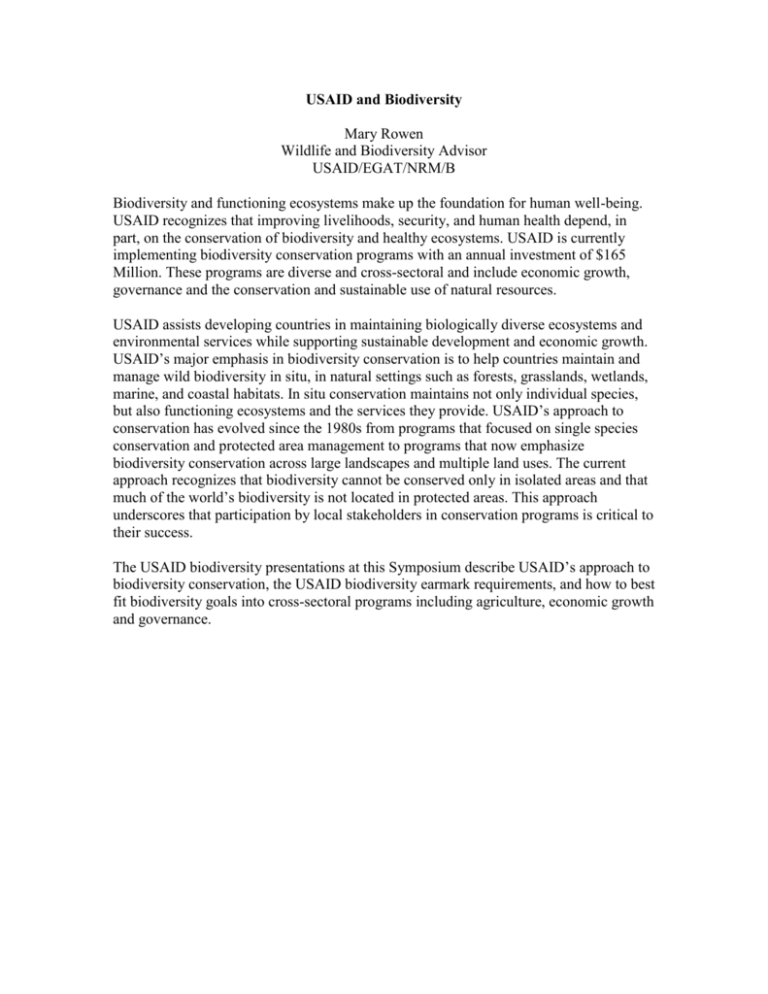
USAID and Biodiversity Mary Rowen Wildlife and Biodiversity Advisor USAID/EGAT/NRM/B Biodiversity and functioning ecosystems make up the foundation for human well-being. USAID recognizes that improving livelihoods, security, and human health depend, in part, on the conservation of biodiversity and healthy ecosystems. USAID is currently implementing biodiversity conservation programs with an annual investment of $165 Million. These programs are diverse and cross-sectoral and include economic growth, governance and the conservation and sustainable use of natural resources. USAID assists developing countries in maintaining biologically diverse ecosystems and environmental services while supporting sustainable development and economic growth. USAID’s major emphasis in biodiversity conservation is to help countries maintain and manage wild biodiversity in situ, in natural settings such as forests, grasslands, wetlands, marine, and coastal habitats. In situ conservation maintains not only individual species, but also functioning ecosystems and the services they provide. USAID’s approach to conservation has evolved since the 1980s from programs that focused on single species conservation and protected area management to programs that now emphasize biodiversity conservation across large landscapes and multiple land uses. The current approach recognizes that biodiversity cannot be conserved only in isolated areas and that much of the world’s biodiversity is not located in protected areas. This approach underscores that participation by local stakeholders in conservation programs is critical to their success. The USAID biodiversity presentations at this Symposium describe USAID’s approach to biodiversity conservation, the USAID biodiversity earmark requirements, and how to best fit biodiversity goals into cross-sectoral programs including agriculture, economic growth and governance.





